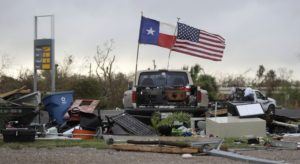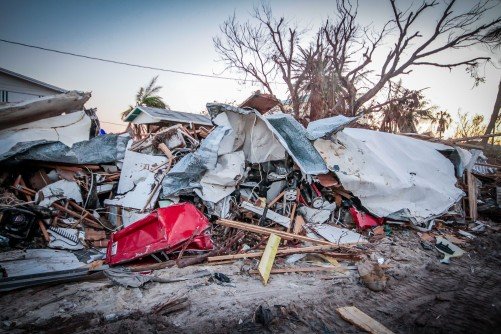Extreme weather took an extreme toll on the U.S. last year.
Losses from weather and climate disasters including hurricanes Harvey, Irma and Maria and wildfires in northern California reached a record $306 billion in 2017, the federal government’s National Centers for Environmental Information in Asheville, North Carolina, said in a report Monday. That topped the $215 billion in losses from events including hurricanes Katrina, Wilma and Rita in 2005.

There were 16 extreme weather events with losses exceeding $1 billion, matching the record set in 2011. Western wildfires led to $18 billion in total costs, triple the previous annual record, while Harvey’s $125 billion bill was second only to Katrina. Tropical cyclones, severe storms, inland floods and wildfires caused 362 direct fatalities.
“No matter how you cut 2017, it was very historic and perhaps even unprecedented in some ways,” Adam Smith, a researcher at the National Oceanic and Atmospheric Administration, said on a conference call with reporters.
The loss totals include things such as the cost of wildfire suppression and disaster relief, Smith said. Health care costs and the toll of physical and mental distress are not counted, making the true costs of weather disasters difficult to calculate.
In other highlights from the report:
For the third-consecutive year, every state in the contiguous U.S. and Alaska had an above average annual temperature. Five states – Arizona, Georgia, New Mexico, North Carolina and South Carolina – had their warmest year on record. Alaska had its warmest-ever December with an average temperature of 19.4 degrees Fahrenheit (minus 7 Celsius), 15.7 degrees above the 20th century average and 2.1 warmer than the previous record in 1985.
Was this article valuable?
Here are more articles you may enjoy.


 Consulting Firm McKinsey to Pay $650M to Resolve Criminal Opioid Probe
Consulting Firm McKinsey to Pay $650M to Resolve Criminal Opioid Probe  CVS Accused of Illegal Opioid Dispensing in Whistleblower Suit
CVS Accused of Illegal Opioid Dispensing in Whistleblower Suit  Congo Sues Apple Alleging ‘Pillaged’ Minerals in Products
Congo Sues Apple Alleging ‘Pillaged’ Minerals in Products  AI Focal Point of Cybersecurity Outlook for 2025, Says Experian
AI Focal Point of Cybersecurity Outlook for 2025, Says Experian 